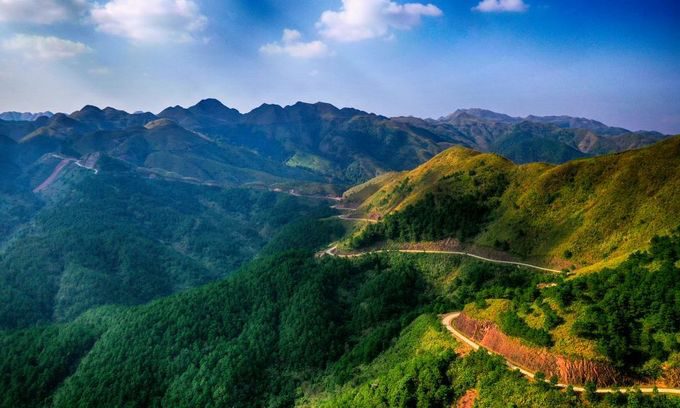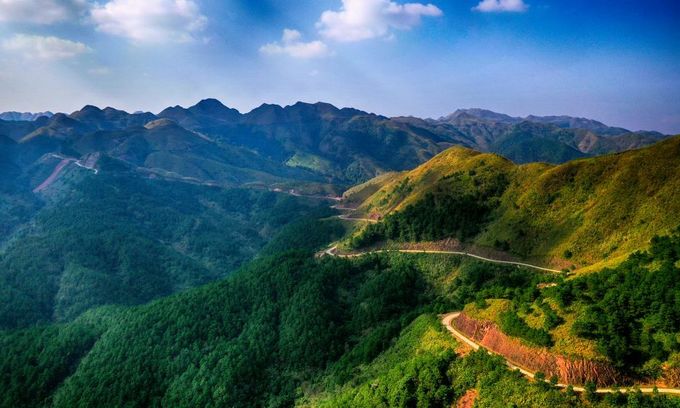
Binh Lieu in Quang Ninh Province, northern Vietnam, offers a mountain camping experience to remember
Named as ‘Sa Pa of the Northeast‘, mountainous district Binh Lieu in Quang Ninh Province is characterized by its cool weather and mesmerizing views.
Sa Pa, a mountainous town in Lao Cai Province, is a very popular tourism destination of northwestern Vietnam.
A morning in early December, we headed here in an SUV from central Hanoi via the Hanoi – Hai Phong, Ha Long – Hai Phong, and Ha Long – Van Don expressways, respectively. After three hours, we arrived at Quang Ninh’s Tien Yen District intersection with Highway 18C.
From here onwards, it was a 40-kilometer drive before our crew reached Binh Lieu District, which borders China.
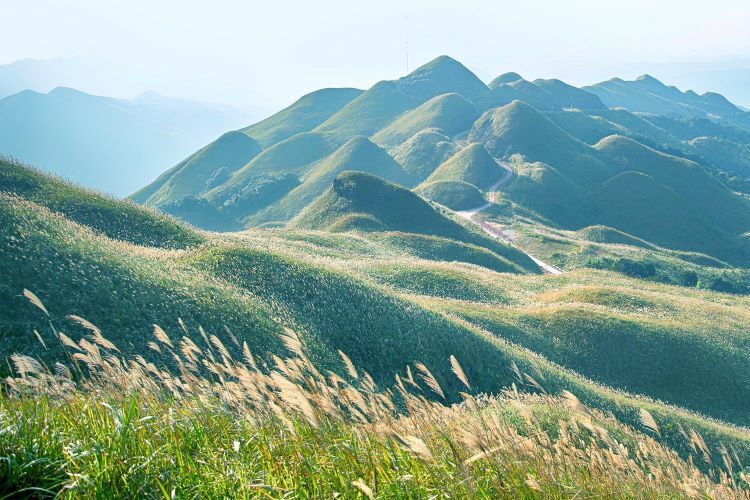
Strokes of whipped up grass fringe the road leading to Binh Lieu District under a foggy sky
Fatigue instantaneously dissipated at the breathtaking sight of silky, azure Tien Yen River and the spicy aroma of vast acacia and Ceylon cinnamon forests. Beyond these woods is a scenic picture of frolicking children, kitchen smoke emitting from stilt houses, and cinnamon quills hung out to dry.
Although Binh Lieu is endowed with a charming beauty all year-round, the district particularly strikes visitors when fall transitions to winter. From the glossy yellow hues of staircase rice fields to the magnificent mountain landscape and natural waterfalls, the area visually amazes at every turn.
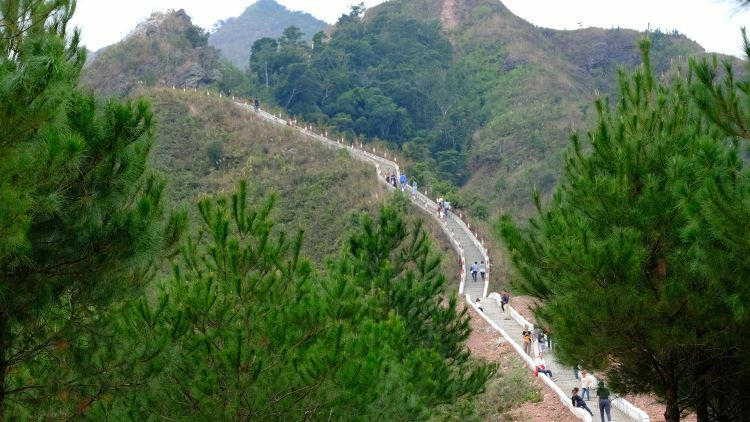
A concrete pathway of 2,000 steps lies atop Binh Lieu Mountain. It requires four to five hours to complete, ending at highest border marker 1305
In winter, sometimes snow covers rooftops in pristine white fluff at some places in Binh Lieu whilst mist engulfs ethnic villages lining the forest, together composing a dreamy painting.
We visited Binh Lieu during the White Flower Festival when the district burst with Thai and Dao ethnic women in bright-colored traditional attire. The occasion celebrated the rich history and ethnic culture of the community with campfires for youth, a crossbow competition, and culinary fair.
Over 90 percent of Binh Lieu’s population are ethnic minorities, mainly Tay, Dao, and Thai ethnic groups.
To round out the trip and profoundly experience Binh Lieu, tourists predominantly camp overnight on Cao Ly Mountain amidst wild nature to contemplate the sunset and sparkling night skies.
For convenience and practicality, campers mainly opt for stretches of land in between Cao Ly Mountain in Huc Dong Commune and Cao Xiem Mountain in Luc Hon Commune due to their flat and spacious surfaces.
After setting up camps and watching the sun drop below the horizon, tourists often commence barbecues at this spectacular high altitude, having local dishes including grilled duck-goose crossbred, glutinous rice cake, and steamed rice rolls served with mulberry distilled liquor. This traditional drink is deemed medicinally beneficial.
The regional climate this time of the year exhibits all four seasons throughout the day. In the morning, tourists wake up to cold gusts of wind and misty air. By noon, the weather develops a summerlike heat with bright rays blasting down on the mountain. As dusk creeps in, spring arrives with its foggy showers.
Generally, there are two main options for camping in Binh Lieu. Tourists could choose to camp independently using their personal gear or acquire a VND650,000 ($28) tour package offered by locals that includes a guide and equipment.
By morning, we ventured down towards the central communal market before again departing. Here, we enjoyed fragrant and scrumptious specialties like five-color sticky rice, regional snails and spring fish before purchasing essential white flower oil.
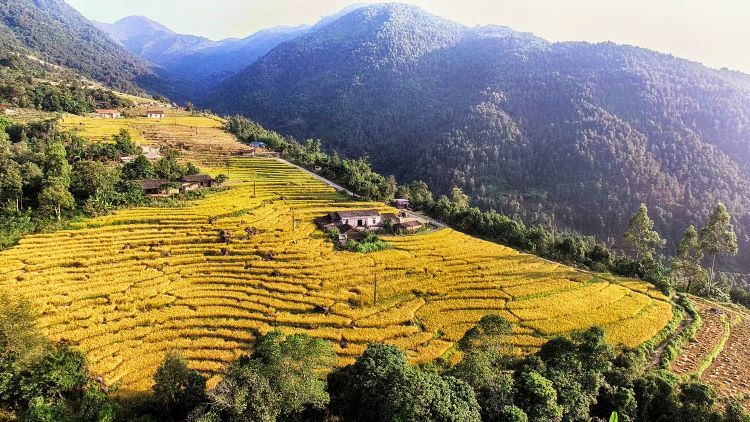
A village corner in Huc Dong Commune, Binh Lieu District
Hieu Nguyen – VnExpress.net

